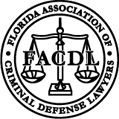- DUI
- Criminal Defense
- Florida DUI
- Traffic Offenses
- Drug Charges
- Marijuana Charges
- Violent Crimes
- Domestic Violence
- Temporary Injunctions
- Weapons Charges
- Theft Crimes
- White Collar Crime
- Juvenile Offenses
- Sex Crimes
- Violation of Probation
- Early Termination of Probation
- Seal or Expunge Criminal Record
- Criminal Appeals
- US Federal Offenses
- Misdemeanor Charges
- Felony Charges
- Co-Defendant Cases
- College Student Defense
- College Student Hearings
- FSU Students
- FAMU Students
- Florida Panhandle Arrests
- Extradition to Florida
- Bench Warrants / Warrants
- Emergency Bond Hearings
- Gambling Charges
- Drone Arrests
- Marsy’s Law
- UAS Infractions
- Introduction of Contraband
- Lying to Police
- Locations
- Case Results
- Our Firm
- Media
- Resources
- Blog
- Contact Us
Revenge Porn & it’s Legal Implications
June 21, 2021 Don Pumphrey, Jr. Criminal Defense, Sex Crimes Social Share
What Is Revenge Porn?
Revenge porn is when a revealing or sexually suggestive image of someone is posted online without their consent, typically by a former romantic partner, with the goal of causing them embarrassment or distress.[1] This content is often shared with a partner in a trusted exchange and then is eventually used to “take someone in their most intimate and vulnerable moment and [rip] them open—it is a form of sexual assault.”[2] It’s also important to note that revenge isn’t always the motive. Perpetrators of revenge porn often engage in the act “for money, attention, and enjoying feeling powerful over someone else who is helpless to stop them in their actions.”[3] Before revenge porn laws, there was no legal avenue someone could take to get their intimate images removed from the internet. To combat this, 46 states including Florida have passed revenge porn laws since 2013.
Revenge Porn Legislation in Florida
Florida addressed revenge porn by criminalizing sexual cyberharassment through Florida Statute 784.049. It went into effect on October 1, 2015 and initially found that “a person commits sexual cyberharassment by publishing an image that:
- Depicts nudity or sexual conduct;
- Contains or conveyed the personal identification information (PII) of the depicted person;
- To an internet website;
- Without the depicted person’s consent
- For no legitimate purpose; and
- With the intent to cause the depicted person substantial emotional distress”[4]
There were two prominent issues with this definition. First, it required that the image be published to a website and allowed revenge porn to still be shared via text message, email, or social media messaging with no legal repercussions.[5] Second, it required the image to include the PII of the person depicted, which at the time was defined as “a name or number that may be used, alone or in conjunction with any other information, to identify a specific person.” [6] After much backlash because of these issues, additional protections were implemented through SB 1136 and took effect in 2019.[7] Undoubtedly the biggest change was that the requirement that the image be posted on a website was quashed, as it allowed disseminating a sexually explicit image of a person through electronic means to fall under sexual cyberharassment.[8] It also broadened the definition of PII to include “any information that identifies an individual, including unique physical representation.”[9] In addition, it required that to qualify as hypersexual harassment “the publication or dissemination of a sexually explicit image be contrary to the depicted person’s reasonable expectation that the image would remain private.”[10] This was imperative, as it signified that a sexually explicit image of someone who willingly sent it to another does not remove their reasonable expectation that the image would remain private.[11]
Legal Repercussions
A person who willfully and maliciously, sexually cyberharasses another person commits a first-degree misdemeanor.[12] This is punishable by up to one year in county jail and a $1,000 fine.[13] A person who has one prior conviction for sexual cyberharassment and commits a second or subsequent offense commits a third-degree felony.[14] This is punishable by up to five years in prison and a $5,000 fine.[15] If a law enforcement officer has probable cause to believe someone committed this offense, they may arrest them without a warrant.[16] Upon a law enforcement officer obtaining a warrant, they may search for the instruments used to commit sexual cyberharassment.[17] A victim may also seek civil damages, including: 1) injunctive relief; 2) monetary damages up to $5,000 or actual damages, whichever is greater; and 3) reasonable attorney fees and costs.[18]
Who Isn’t Liable?
The statute doesn’t apply to interactive computer or communication services that allow people to share or upload content.[19] Therefore, if someone posted a sexually explicit image that met the elements of sexual cyberharassment on Facebook or Instagram, those social media platforms are not liable. In addition, the statute doesn’t apply to law enforcement officers that publish sexually explicit content in connection with the performance of their duties.[20]
How Can We Help?
A sexual cyberharassment charge is a serious offense that requires the diligence and expertise of a trusted criminal defense attorney. Contact a Tallahassee criminal defense lawyer as soon as possible to explore your options and to ensure you have not been wrongfully charged with sexual cyberharassment. Don Pumphrey and the members of the legal team at Pumphrey Law Firm are well versed in this area of law and will be adamant in pursuing justice on your behalf. Call a defense attorney today at (850) 681-7777 or send an online message to discuss your options during an open and free consultation with an attorney in our legal team.
This article was written by Sarah Kamide
[1] Revenge Porn, Dictionary.com (2021)
[2] Jennifer Gerson, Revenge Porn is a Dangerous Form of Sexual Abuse—and Victims Often Have No Power to Fight Back, Health.com, https://www.health.com/condition/sexual-health/revenge-porn (Apr. 8, 2020).
[3] Id.
[4] Session Bill 1043, Florida Senate (2019), https://www.flsenate.gov/Session/Bill/2019/1043/Analyses/h1043c.JU A.PDF
[5] Id.
[6] Id.
[7] Cyberharssment, CS/HB 1136.
[8] Supra note 4.
[9] Id.
[10] Id.
[11] Id.
[12] F.S. 784.049(3)(a)
[13] F.S. 775.082 and F.S. 775.083
[14] F.S 784.049(3)(b)
[15] F.S. 775.082 and F.S. 775.083
[16] F.S. 784.049(4)(a)
[17] F.S. 784.049(4)(b)
[18] F.S. 784.049(5)
[19] F.S. 784.049(6)(a)
[20] F.S. 784.049(6)(b)












